
Tips for
tigers

Unlike the upper reaches of the largest river that empties into the Indian Ocean, fishing in the lower Zambezi is more focussed on what you can see and throw at, as Gareth George recounts.
Below the mighty Kariba dam the Zambezi spreads out and sprawls into many channels, with the largely controlled flow creating permanent islands. As the water gradually erodes the banks, it fells the mighty trees that litter the bank. The resulting tree and root structures provide the ideal habitat for ambush predators.
There are two main target species, one being the impressive Vundu, a catfish anglers are keen to strike off their list, with the other being a feisty game fish which has established this river’s reputation.
If the superb game viewing isn’t reason enough to visit Baines River Camp (pictured below) then the tiger fishing certainly is. Situated in the game management area (GMA), it allows people to fish both the main river opposite Mana Pools and the Lower Zambezi National Park. You can literally throw a line from this luxury lodge!
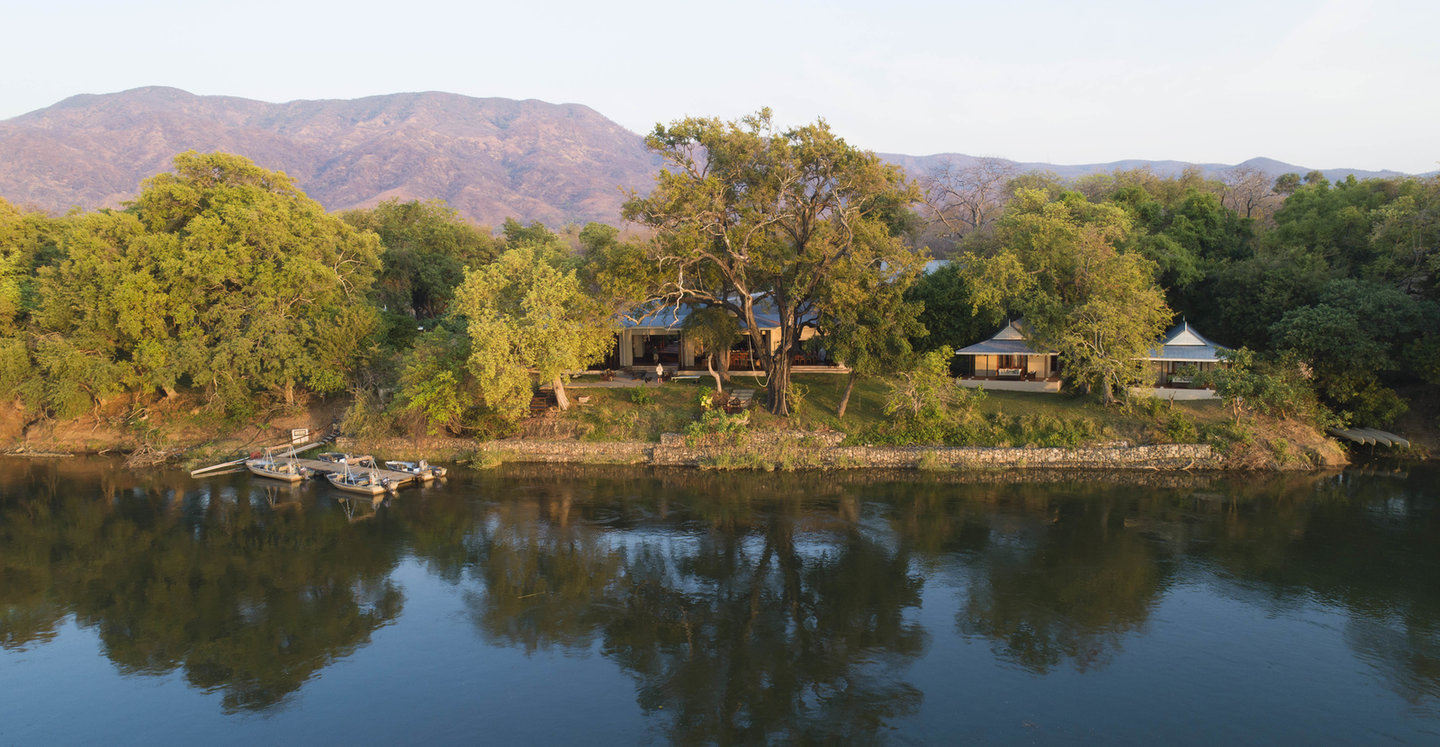
Our recent trip taught us a few lessons worth sharing. Firstly, there will be much casting, at times in intense heat, so make sure you practice with your 9-weight or a bad case of tennis elbow might be all you get for your efforts. Accuracy is also vital since it’s important to be able to put your fly tight up against the structure. You also want to be able to load your line with ease, so don’t go under-gunned. (We put the GR80 Greys stick thoroughly through its paces and it didn’t disappoint.) A lot of fly fishers tend to overload their rods with a heavier line than the AFTMA, but we found the 40 Plus Airflo 9S7 proved to be ideal.
As you drift down, the aim is to bang your fly just above the oncoming structure and swing it past the break that the fallen tree has created from the current. Where water converges, created by the channels flowing through the sandbanks and islands, you should find some fish, especially if it meets with the main river. It’s easier to sit and wait for that passing meal than have to expend unnecessary energy swimming around looking for it.
Backwaters will hold the tilapia and tigers in proverbial nappies, so in these outflows you could also stumble across a decent fish waiting to pounce on the bold youngster venturing out of the nursery.
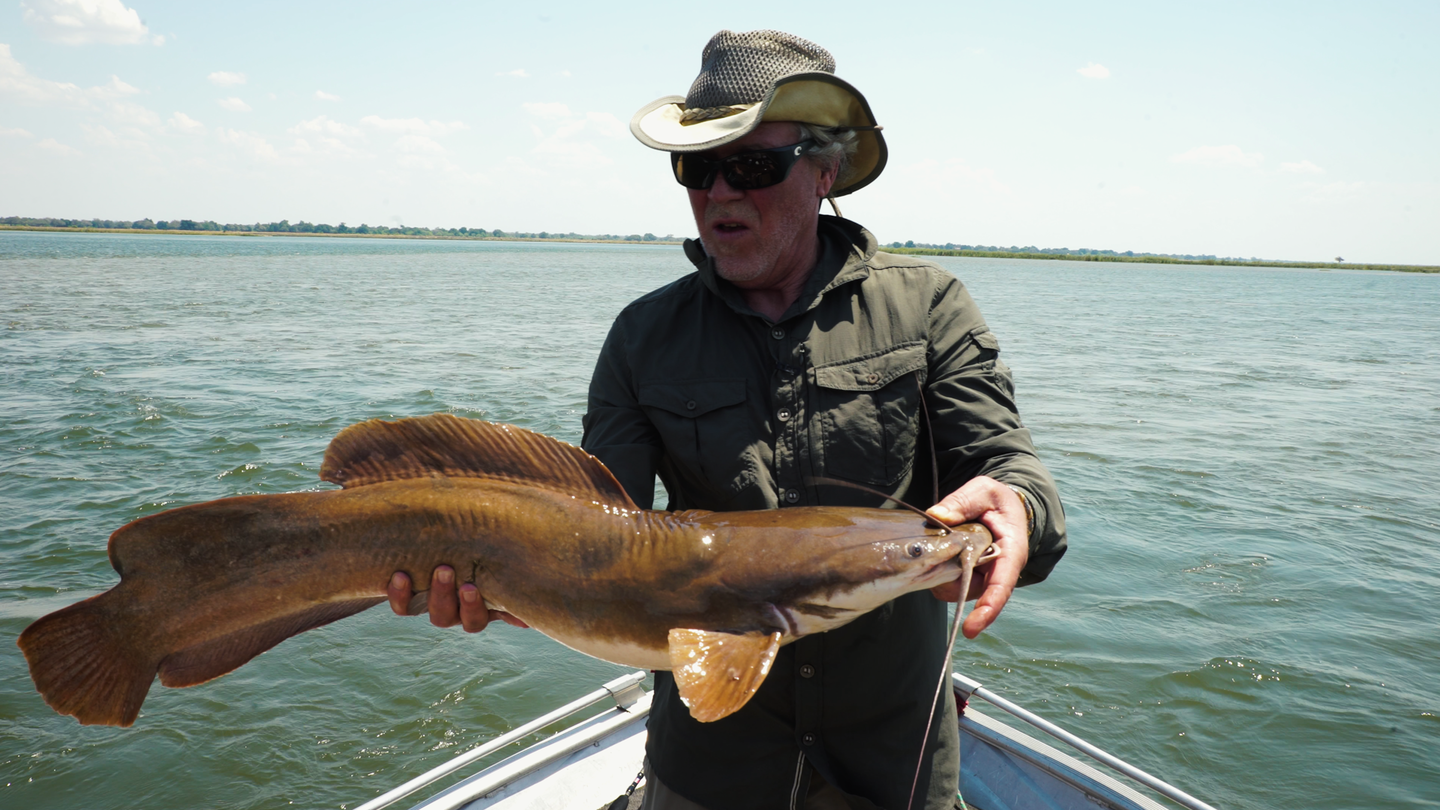
A sizeable vundu in the hands of a delighted Brad Cartwright means it’s a win – and the checklist can be ticked off.
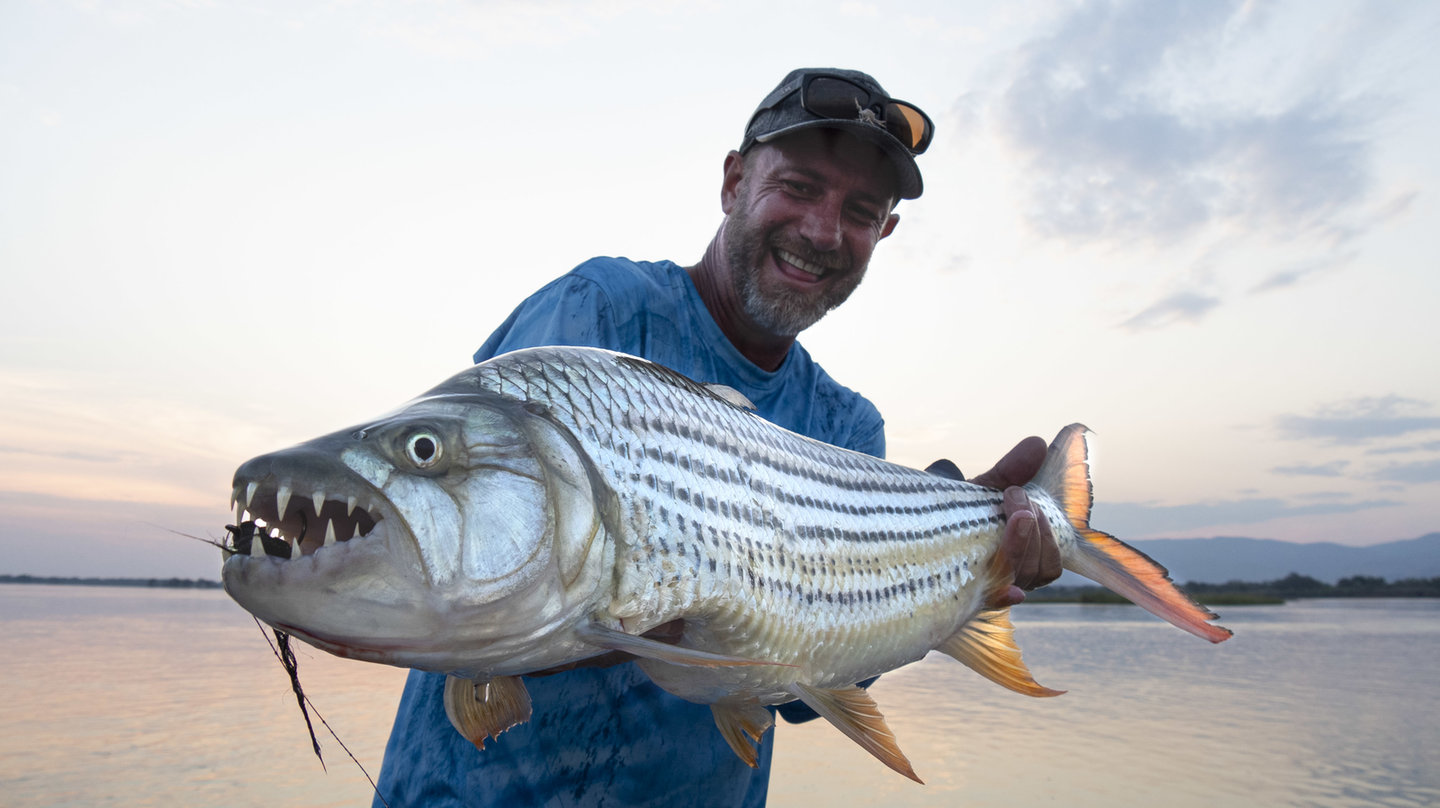
The fearsome fangs and distinctive stripes of an impressive tiger made the trip for Jeremy Rochester.
But it’s the drop-offs that most folks overlook, as they don’t immediately jump out but with the amount of sandbanks in this braided section of the Zambezi, there’s no shortage of them.
A drop-off affords the big tigers a break from the current and since they’re not particularly worried about any other predator, they’ll sit in the open river on said drop-off, ready to ambush anything overhead. To target these areas properly you have to try and anchor up or drift slowly over them, casting above your drift, so that your line has time to get down to the zone.
There’s no gentle enquiry with any tiger strike: a big fish will almost wrench the rod from you – so hold on! Always line strike, never lift your rod and give it no quarter. The more string you allow this fish, chances are they will put you in the structure and leave you cursing.
Tigers are renowned for their spectacular jumps, trying to throw your hook, but don’t provide any slack, reel them in and feel that line burn!
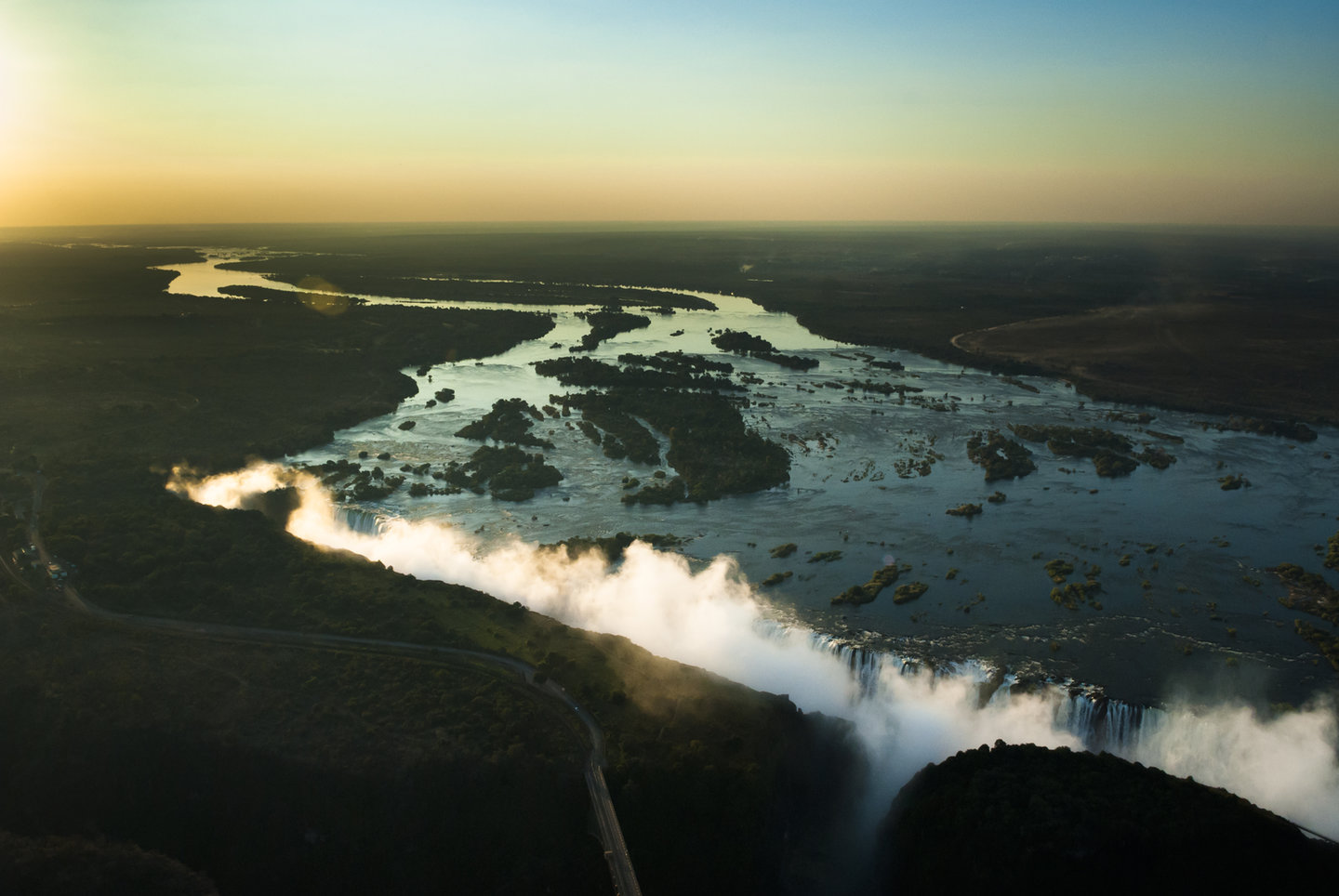
If you’re out at dawn or fishing to last light then enjoy the surface action. You need a good line to throw a popper/flipper, and we found the SuperDry Tropical Airflo ideal. Same strategy in terms of structure targeting, just remember not to strike right away – which is easier said than done – but try to let the tiger really eat before line striking. You’ll lose more than a few on the surface, but watching the smashes makes it all worthwhile.
Hooks that do the job are many, I prefer the Gamakatsu B10S and when it comes to flies, we favour dark brush flies that push a lot of water as well as Whistlers or a heavily weighted Clouser to punch through the water on a quicker drift. Although we’ve caught on a variety of colour combinations, black and red/white works well.
Do remember that in the lower Zambezi you’re not top of the food chain. In fact, you are very much on the menu as the population of flat dogs defy belief – so don’t be putting your limbs in the water when you release fish.
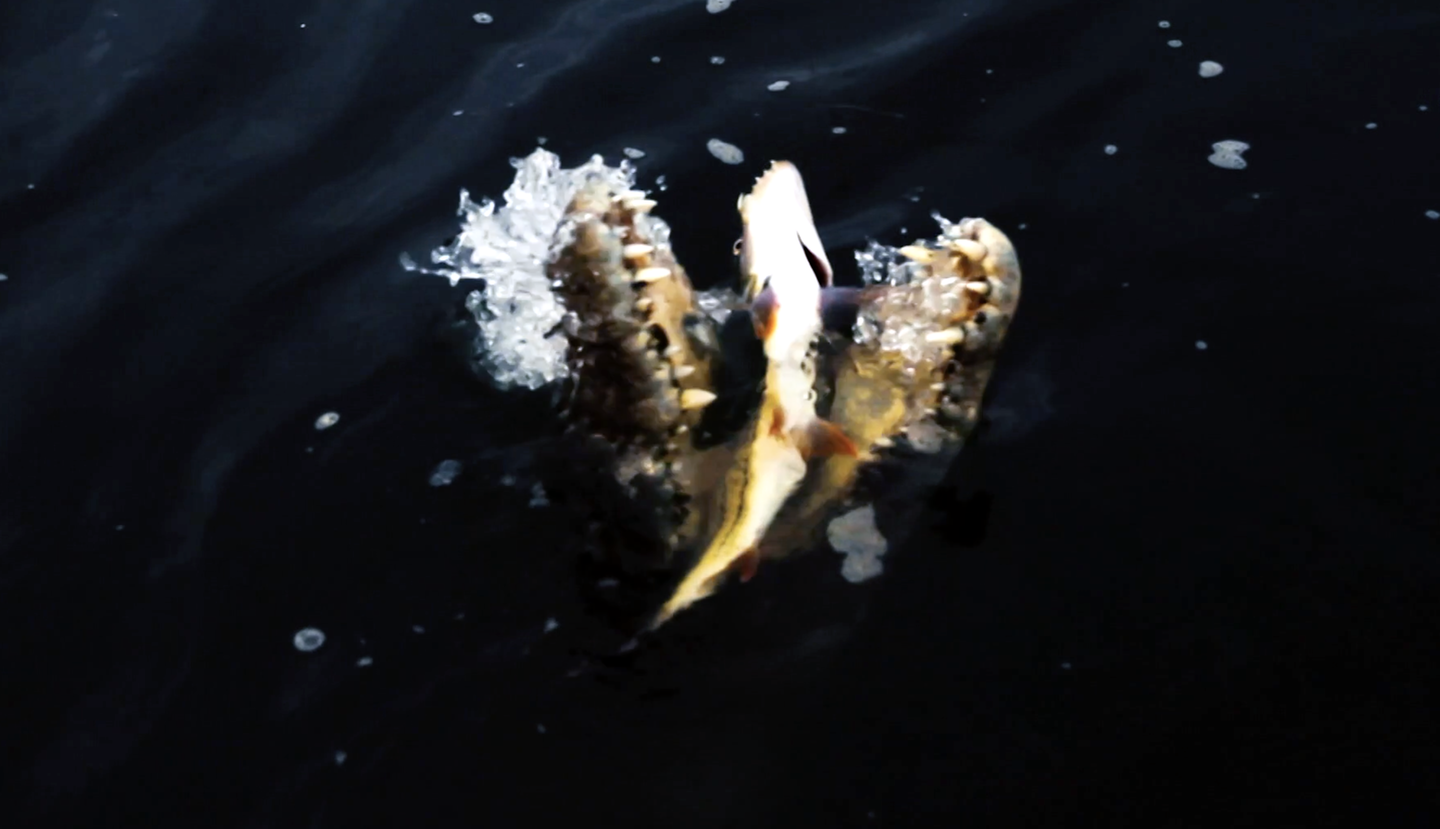
BACK TO TOP